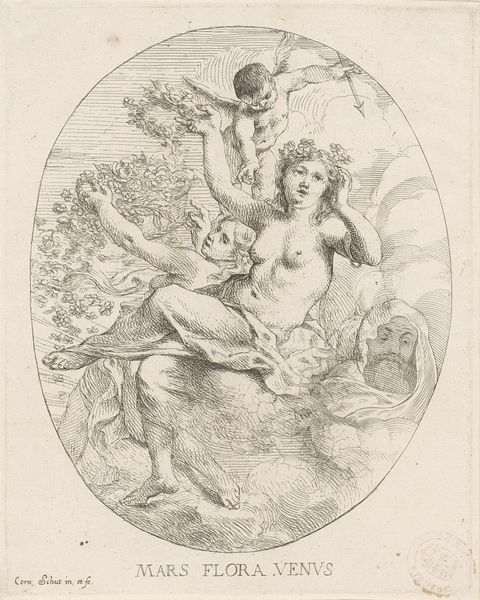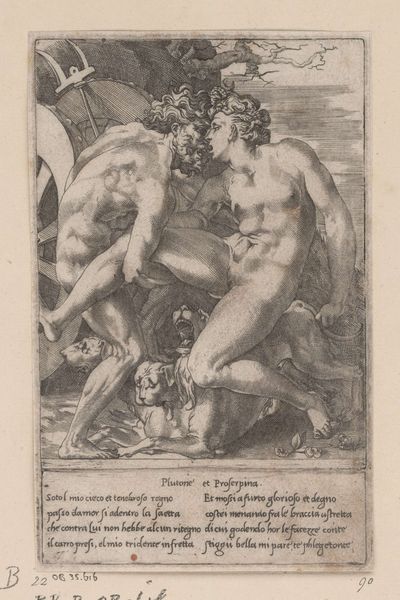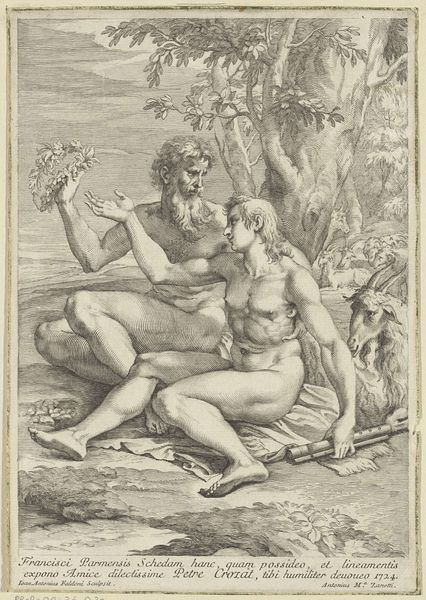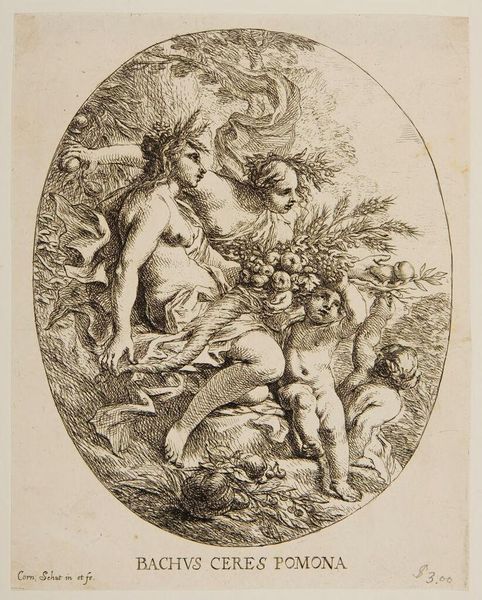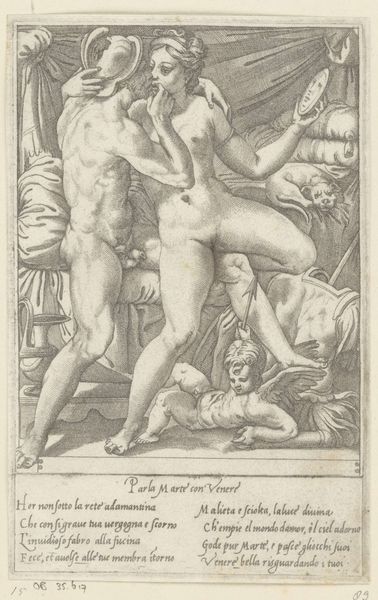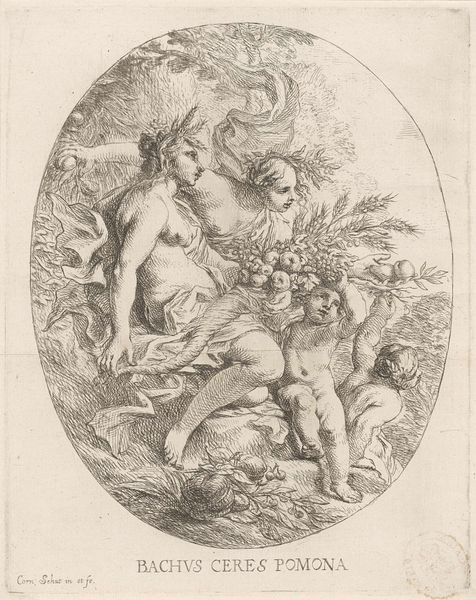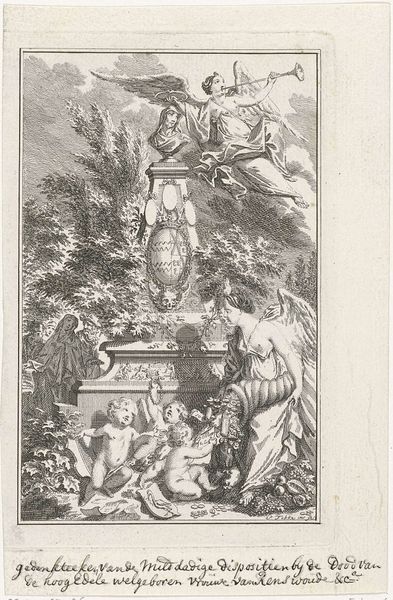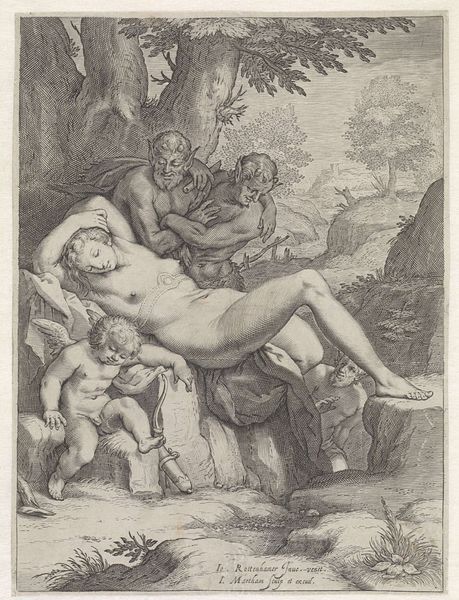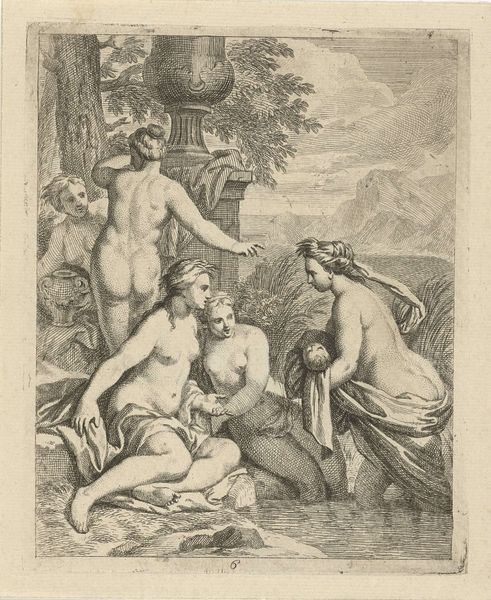
print, engraving
#
allegory
#
baroque
#
pen drawing
# print
#
old engraving style
#
figuration
#
history-painting
#
nude
#
engraving
Dimensions: height 241 mm, width 187 mm
Copyright: Rijks Museum: Open Domain
Editor: This engraving, "Twee elkaar liefkozende goden," or "Two Gods Loving Each Other," by Jacob Matham, dates back to the early 17th century. The way the figures are nestled together in the foreground, contrasted with the crowded scene in the background, makes me wonder about the story being told. How do you interpret this work? Curator: This image, while seemingly idyllic, operates on multiple levels. We see a foreground that depicts intimacy, but is that intimacy available to everyone represented here? The print speaks to a very specific, and very elite, understanding of love and pleasure in the early 1600s. Consider who had access to such leisurely scenes – the people at the table. Now consider those figures surrounding them; are they included in the festivities? Editor: I hadn't thought about it that way. It seems to present a kind of social stratification through the lens of mythology and pleasure. Curator: Exactly. It asks us to question who gets to participate in these "universal" experiences, like love and celebration. Are those experiences genuinely available to everyone, or are they reserved for a select few? It forces us to think about the political implications embedded within seemingly harmless images of beauty. Consider the power dynamics at play in Matham’s presentation of both figures and composition. Do you observe such themes represented even today? Editor: That's fascinating. It makes me rethink how I see not only this piece but other seemingly straightforward depictions of love and relationships. Curator: Precisely. Art can be a mirror reflecting not just beauty, but also the societal structures that determine who gets to define beauty and who benefits from it. Editor: Thanks! I’ll definitely keep these ideas in mind as I study art history. Curator: A keen eye can reveal hidden stories everywhere; don't stop looking.
Comments
No comments
Be the first to comment and join the conversation on the ultimate creative platform.
